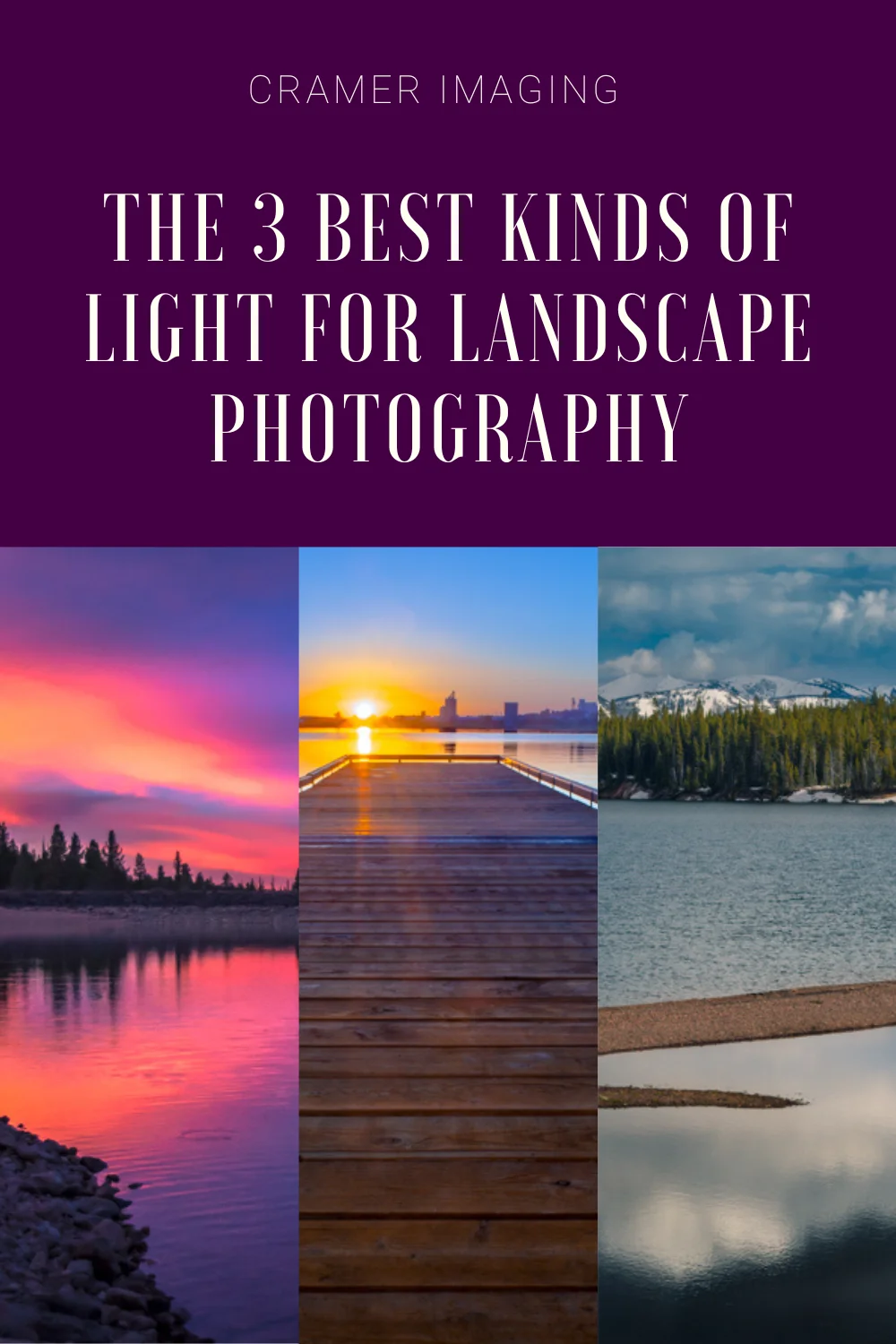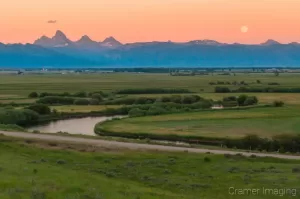
If you’re looking at getting into landscape photography, then there’s a lot to learn. You’ve got to learn your camera, basic composition, and lots of other aspects of good photography. One thing that you will also have to learn is what kind of light to shoot your landscape photos with. Today, we’re talking about the best kinds of light for landscape photography.
One of the worst enemies of the landscape photographer is harsh and direct sunlight. It creates deep shadows and blown-out highlights. While you eyes may be able to compensate for that somewhat on scene, the camera cannot compensate for that at all. Details will be lost.
With cloudy skies, you are guaranteed not to get those harsh rays. You’ll have diffuse and even light over the entire scene you wish to capture. You’ll have all the details intact because the camera will be able to see all those details.
Cloudy skies will let you shoot landscape photos at anytime of day without worry (unless those skies also come with rain, snow, or lightning). If you manage to get out in the field at the right time, you can get some very dramatic skies which can add something special to your landscape photos if you frame your composition right.
Be prepared, though, for dull gray and uninteresting skies if you choose to shoot landscape photos on a cloudy day. Dull skies are far more common on cloudy days than interesting skies are. Also, be aware that cloudy skies tend to artificially cool your photos. You will need to set your white balance on cloudy or make adjustments in post-processing to make up for the color shift.
Now we come to a very popular time of day for landscape photography: sunset. It’s got that soft and diffuse light which all landscape photographers have come to love. It usually happens when most people are still awake so you don’t have to adjust your schedule or your sleeping schedule to get good landscape photos. It seems to be, all around, the best option for most beginner landscape photographers.

The magical light of sunset for landscape photography was discovered by none other than Ansel Adams himself. Thanks to the position of the sun relative to the Earth’s atmosphere, there is more atmosphere for the sun to pass through before it gets to us. This helps soften the light considerably from the light we get at midday.
If you happen to have the right kinds of clouds in the sky during sunset, you can get some very interesting colors and shapes which will contribute greatly to your landscape scene if you frame it right.
As with cloudy skies, sunsets do have a bit of a downside. The light is very soft and will produce soft shadows to give some definition to the landscape, but the light also has a warm tone to it. Everything in the landscape will have an automatic warmer glow than normal. Many people find this glow pleasing so it need not be a serious downside.
The other downside is that everyone is still awake. If there’s a gorgeous sunset going on at a place like Bryce Canyon (above), you can bet that everyone and their dog with a camera will be out there trying to shoot the same scene you are. You might have trouble setting up a shot without other people (tourists and photographers alike) in the shot.
The hands-down best time for landscape photography is at sunrise. If you’re looking for soft diffuse light which will properly illuminate your landscape scene without creating harsh and deep shadows, you’ve got it with sunrise. If you want a time when you won’t have to frame around tourists, sunrise is your time of day for landscape photography.

Sunrise was another of those times of day pioneered by Ansel Adams as one of the best times of day for landscape photography. However, the light quality is slightly different. It has a slightly cooler cast to it than sunset does. For this reason, most serious landscape photographers prefer to shoot at sunrise over sunset.
If you want to try and shoot landscape scenes with smooth and mirrored water, then you only option is to shoot at sunrise. As the temperatures fall at the end of the day, the winds pick and ruffle the water surface. Any reflection is shattered with the waves. At sunrise, you’re at the coldest point of the day. There’s usually no wind if the weather is reasonable. This allows for those mirrored surfaces on water which are so popular in landscape photography.
Sunrise is not without its downsides either. There’s the very obvious issue of having to adjust your schedule. Most people don’t like being awake that early, even if you’re a morning person. If you’re not a morning person, like me, then sunrise landscape photography is even more of a challenge. There’s also the fact that sunrise is the most popular time of day for anyone serious about landscape photography. If you want to get sunrise shots of a popular vista, you’ll have to squeeze in next to lots of other photographers. Some don’t always want to share the view.
If you’re wanting to get into landscape photography, you’ll need to get out there in the field during the best kinds of light available. Those are cloudy skies, sunrise, and sunset. If you’re starting out, try with cloudy skies and sunset. If you feel more adventurous or like it’s time to step things up, take a look at sunrise. Each has its positives and negatives but all will yield you the kind of soft and diffuse light (the best) which makes the best landscape photos.


Receive monthly updates in your inbox from us.

Join our email-only photo of the week club to get the full stories behind how we captured our favorite fine art landscape photos.
We respect your privacy
No More Results